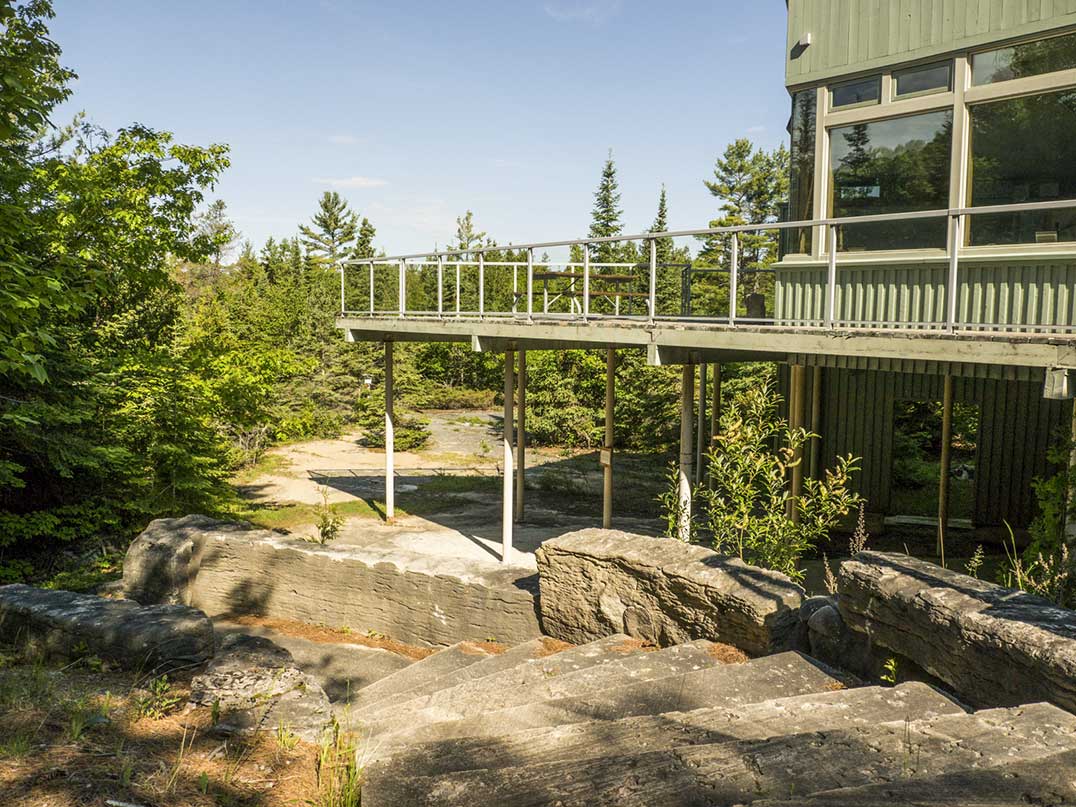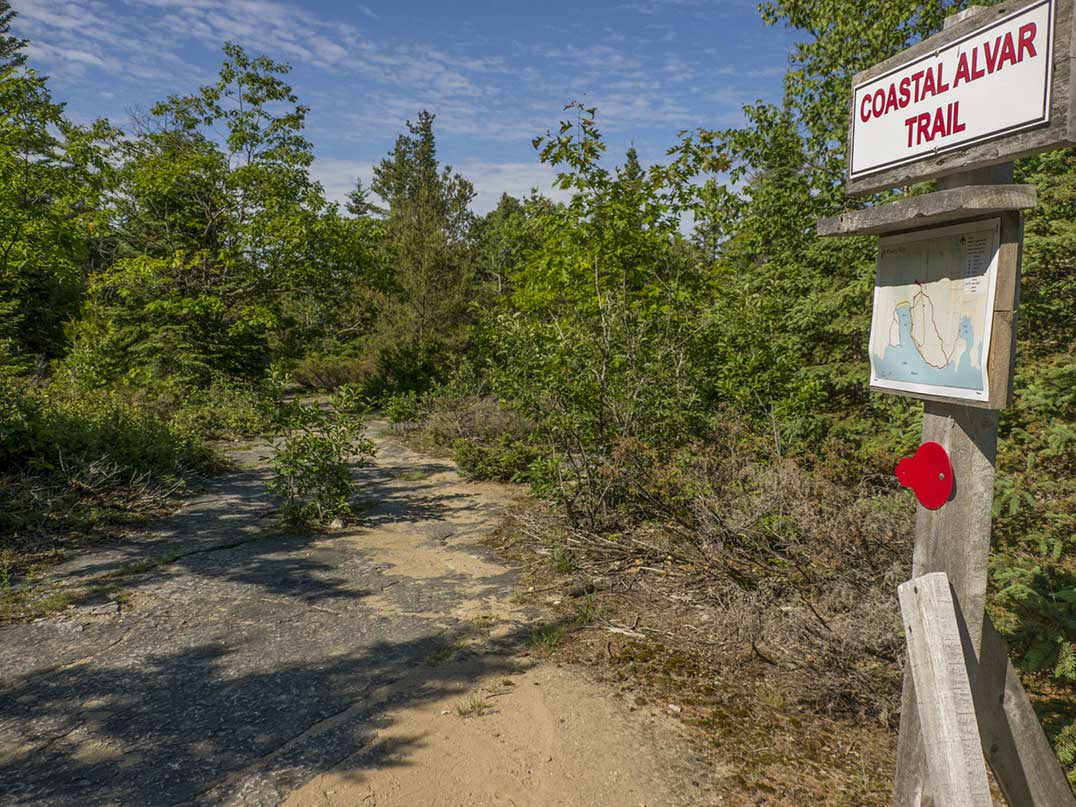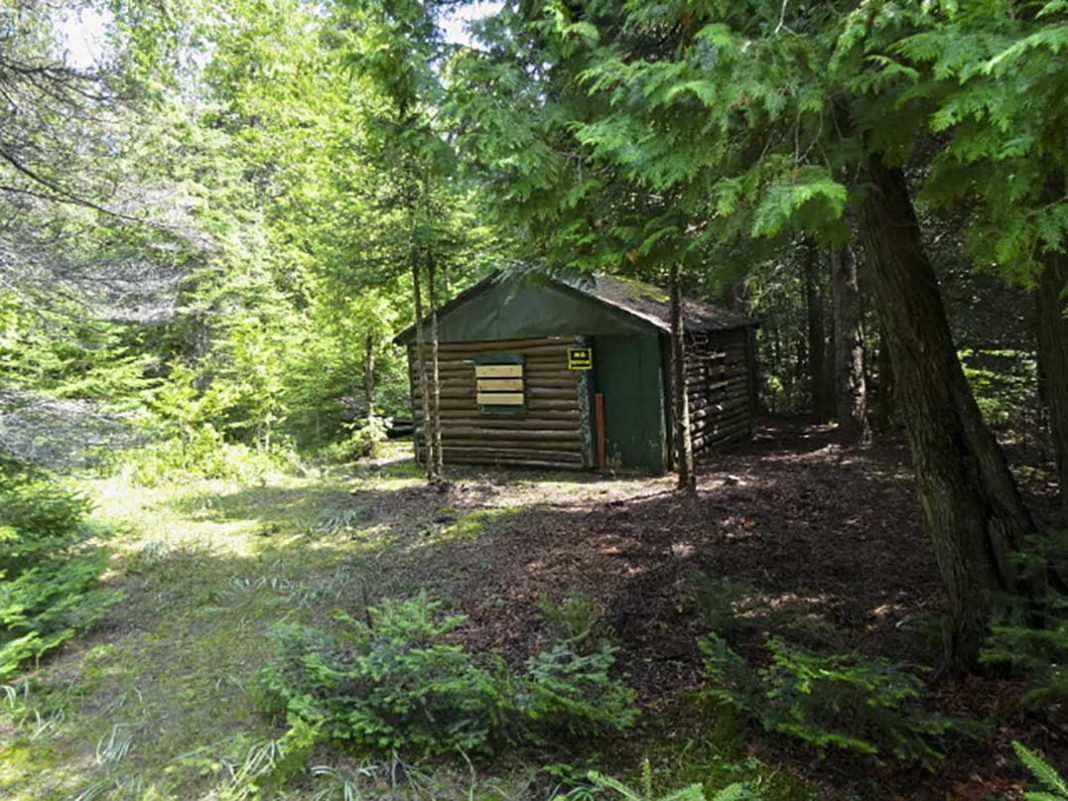by Isobel Harry
Throughout the settlement era on Manitoulin, stories popped up about people who lived alone in the forest, shunning others while making a go at the difficult art of survival. There was an air of mystery about them: rarely seen, with no need for human company, there was little information to feed the rumour mill, or the historical records.
A legend of sorts arose about a very real man by the name of Edwin Saunders, who called himself Ned. He is credited with being one of the very first settlers in Gore Bay, back in the early years of settlement, soon after the Treaty of 1862.
Not much is known about him in local history books; Shelley Pearen, in ‘Exploring Manitoulin,’ writes that Ned Saunders was born in Crediton, England, in 1822 (sometimes given as 1820) and educated there, coming to London, Ontario with his family in 1849. He was “a bachelor, scholar and musician who preferred to live alone with nature in as remote a setting as possible.”
In a more revealing chronology of events from the Saunders Family genealogy, it is recorded that Edwin (Ned) Saunders “soon went to Manitoulin” on several visits after arriving in Canada. In 1873, when he was in his 50s, he “arrived in Gore Bay in a small sailboat and landed in a small cove on the east entrance to the bay and later moved to a small cove at the lower part of the bay. Here he built a small house or dugout in the bank. How he lived is not known as he is considered the first resident, no other resident being within miles of him. His home was a large hogshead [described as a small cliffside] and poles covered with brush and earth.”
On his last visit to his family in London in 1872, before finally settling on Manitoulin, he had “sailed to Owen Sound in his own boat, walked 125 miles to London and arrived looking like a tramp.”
Eight or 10 years later, Gore Bay had become too crowded for Mr. Saunders, so he moved west, first to Elizabeth Bay where the new settlers of the Ainslie family soon arrived. In 1878, they recalled finding “one white man living alone in a small log shanty near where they landed. Edwin Saunders, known as Ned, was somewhat of a character [….] He lived there on the bank of what is now Black Creek … His home there was a log construction and partly buried in the bank of the creek.”
That same year, Ned Saunders “walked regularly to Colin Campbell’s home to pick up mail for the residents of Elizabeth Bay.” He bought some land, 130 acres then another hundred, all at 50 cents an acre.

Ned’s younger brother, William, came to visit in 1880 with his wife and six children; he was a pharmacist, naturalist and agriculturalist of international repute who founded the Experimental Farm in Guelph.
“Sometime around 1882,” reads information in the Visitor Centre, Ned Saunders built his shanty in what is now Misery Bay Provincial Park, across the highway from his former shanty in Elizabeth Bay, but deep in the woods away from other settlers. Built against a low limestone cliff, it is of the type built by Manitoulin settlers in the 1870s and 80s, often abandoned once a proper cabin was built; Ned Saunders built and lived only in shanties, considering them adequate to his needs.
The genealogy entry for 1884 reports on Ned Saunders’ being “well-educated for his time,” and visiting the home of James Davidson Ainslie to “discuss various items of the news of the day,” as well as the new books in the Ainslie’s “good library.” Ned also brought fish to Mr. Ainslie to trade for bread and supplies.
In 1891, the Ainslie family needed a new schoolteacher for the schoolroom in their home as it was getting to be too much for grandfather Ainslie. “A man by the name of Ned Saunders happened to be living over on the sand beach,” reads the entry. “Old Ned, as he was called, moved in with the Ainslies and taught the children until his health failed.”
In 1894, it says, simply, and sadly, “Mr. Saunders is untimely destitute.”
James D. Ainslie elaborates, “We have partly supported him for many years, and this last few months we have taken him in our house, he is not fit for to take care of himself. All the land he had he transferred to Mr. Leeson, formerly storekeeper in Gore Bay, for food supplies and clothing some years ago [….] worthless land or it would have been gone too.”
The last record of Ned Saunders is the registration of his death in Sault Ste. Marie in December of 1895, at 73 years of age. A man of obvious talents and certain social skills who chose a solitary life over community comforts until the survivalist could no longer sustain it.

Today, Ned Saunders’ cabin, within the boundaries of Misery Bay Provincial Park, about 30 kilometres west of Gore Bay, may be visited by hiking the Coastal Alvar Trail. John Diebolt, former Chair of the Friends of Misery Bay board of directors and diehard park volunteer, along with many others, explains that Ned Saunders picked this beautiful spot—now called Saunders’ Cove—because the 75m walk to the water’s edge was convenient for his boat.
A shelter was built in 2014 right by Ned’s shanty, providing shade and “a spectacular view” in which to learn about the historical and geological interest of the site.
On Tuesday, August 27 at 10 am, Maddie Wagar, operations manager/naturalist at Misery Bay, will lead a hike to the Shelter at Saunders’ Cove. The hike will focus on the historical aspects of Ned Saunders when he resided here and on the geological features found along the hike. Pre-registration is required by emailing John Diebolt at rjdiebolt@hotmail.com
There is no charge for the hike, but the Friends of Misery Bay, as a registered non-profit charity, relies on donations to provide activities such as this and other hikes, trail improvements, to cover staffing and operate the Visitor Centre. Donations will cover the $2/person mandatory Ontario Parks Day Use fee and also include an energy-inducing trail cookie made by Rose Diebolt, the talented chef of Garden’s Gate Restaurant.

Misery Bay Provincial Park, 400 Misery Bay Park Road, off Highway 540 near Elizabeth Bay
Visitor Centre Hours (July-Aug): 10 am – 4:30 pm daily. www.miserybay.ca, info@miserybay.ca, Tel: 416-548-6131





